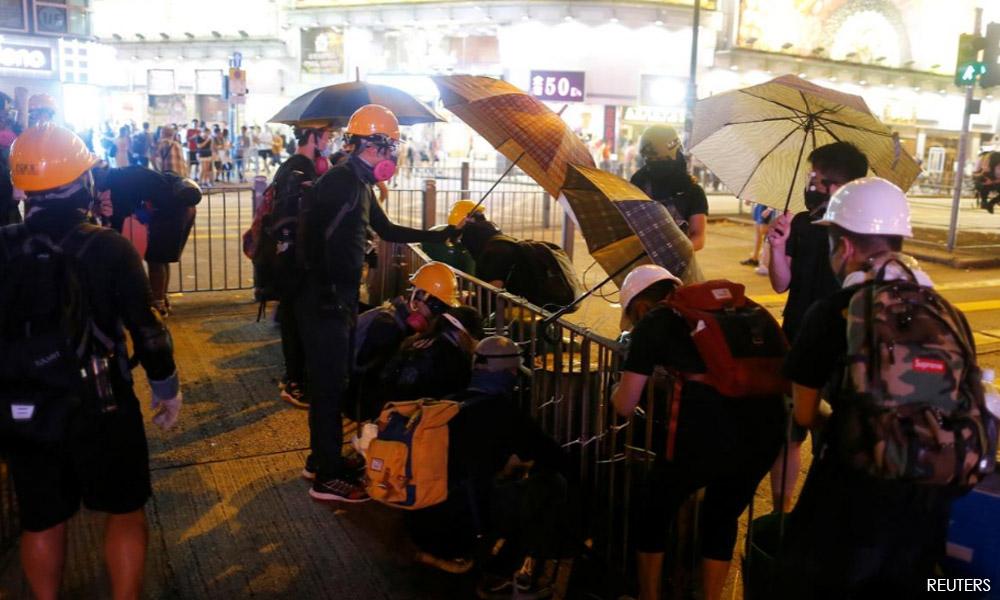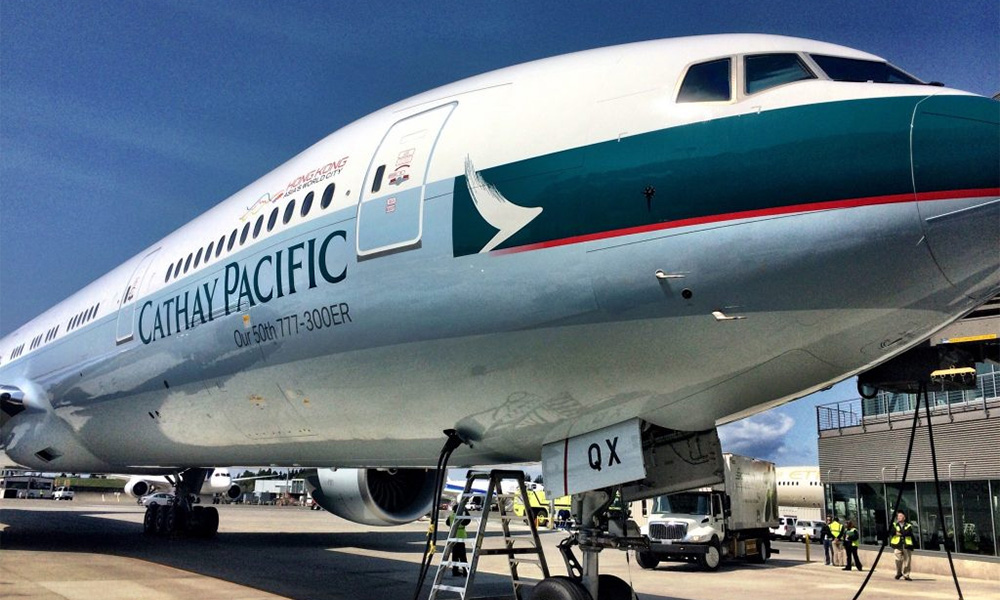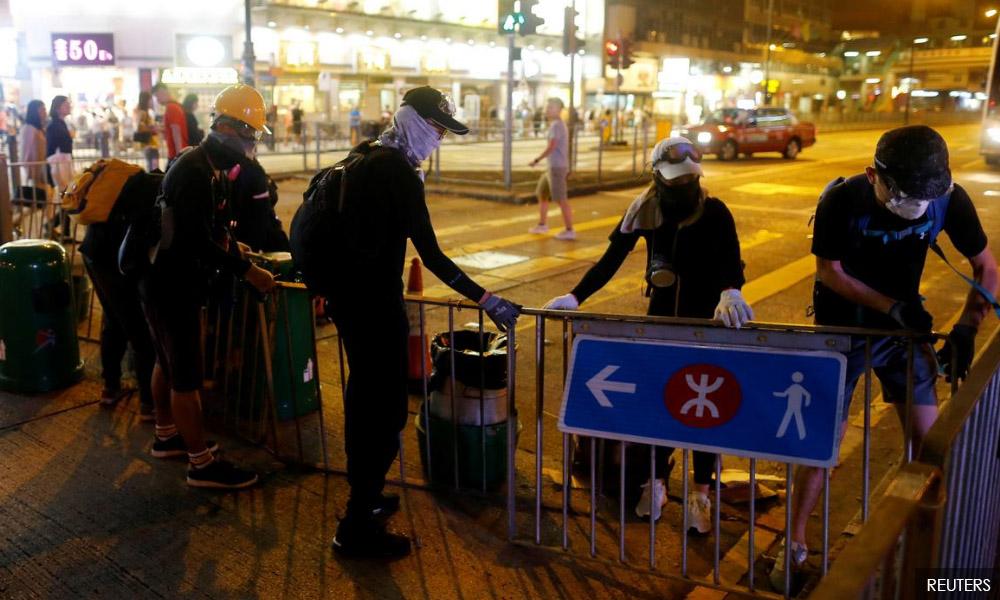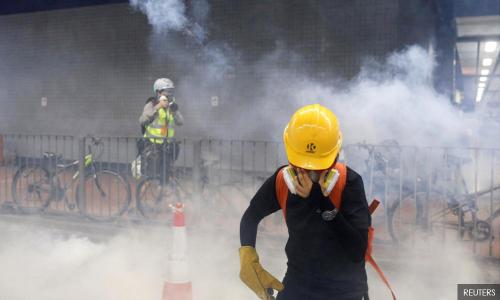Hong Kong police fire tear gas as protesters hit and run
Hong Kong police fired volleys of tear gas to disperse anti-government protesters on Saturday - sending tourists fleeing weeping in Kowloon - only for demonstrators to regroup and gather elsewhere during another tense, hot and restive weekend.
Weeks of increasingly violent protests have plunged Hong Kong into its biggest political crisis for decades, posing a serious challenge to China’s central government in Beijing.
On Saturday activists rallied across the city, with thousands occupying the airport arrivals hall for a second day, while elsewhere police displayed a new willingness to quickly and forcibly clear them from the streets.
That became a cat-and-mouse chase with demonstrators late into the summer night.
Tear gas was used without much warning shortly after several hundred activists, who had marched through Tai Po in the north of the territory, had barricaded an intersection in the Tai Wai neighborhood around nightfall.
They dispersed, as noxious smoke also filled the train station there, bringing train passengers to tears.
Then demonstrators popped up again in Kowloon, a large urban district on the mainland side of Hong Kong’s harbour, only for police to fire another volley of gas from Tsim Sha Tsui police station, sending nearby tourists running with welling tears.
Several other exchanges followed, with protesters, wearing helmets and masks, mostly withdrawing when police fired gas or advanced with shields and truncheons, exhausting authorities and leaving the weeks-long stand-off little closer to resolution.
Luxury shops were caught up in the protests, with some shoppers taking pictures of riot police, while other bystanders - at one stage hundreds - jeered the officers.

“If the government thinks we’ll give up and not come out anymore, they’re wrong,” said student Chris Wong, 20, at Tai Po.
“Carrie Lam is now spreading lies and blaming us for destroying Hong Kong’s economy. She’s the one who is destroying Hong Kong,” he said. “We’ll continue to fight, but we’re going to be smart and wear them down.”
Lam, Hong Kong’s leader, said on Friday the economy - buffeted by China’s slowing economy and the US-China trade war - was being undermined by the protests, which began in June.
A government spokesman described the day’s demonstrations as “illegal activities” that have “been significantly affecting people’s daily lives”.
Demonstrators, most of them young, appeared only to be digging in. Late on Saturday they flashed laser pointers at riot police and lifted bricks and scavenged building materials to barricade roads in Kowloon.

China, meanwhile, has targeted the city’s corporate giants, demanding flag carrier Cathay Pacific Airways suspend staff involved in the demonstrations - a move which also brought pressure on the airline from mainland businesses.
The airline told staff on Saturday it would bar any “overly radical” employees from crewing flights to the mainland, and said it had removed a pilot who was arrested at protests last week from active duty.
Neither warning - one aimed at residents and the other at a business emblematic of the city - deterred demonstrators.
Leung Wai Man, a housewife in her 60s, said she had been motivated to march in Tai Po because she was angry about what she saw as the violent response by police at some protests.
“We are very angry about the police over arresting our teenagers,” she said. She said she was worried about escalating violence, but added that “the protesters were just trying to protect themselves against police violence”.
More demonstrations are planned on Sunday, including at the working class district of Sham Shui Po, the scene of violent confrontations between activists and police, prompting authorities to plan shutting many public buildings there.
The protests began after Hong Kong’s government tried introducing an extradition bill that would have allowed defendants to be sent to mainland China for trial.
The bill has been suspended, but protesters have stepped up their demands and are now calling for greater democracy and Lam’s resignation.
Young people have been at the forefront, worried about the erosion of freedoms in Hong Kong, while also concerned with issues such as wealth disparities in the city.

Thousands of mostly young activists filled the airport’s arrivals hall for a second day, some sitting and shouting slogans, while others drew protest posters and greeted arriving passengers.
Older people have also been appearing. Earlier on Saturday, in two separate protests, small groups of elderly Hong Kongers and families marched near the financial centre’s business district. Both marches and the airport protests were peaceful.
“We hope to provide a safer place for parents and their kids to participate in rallies, and to voice their concerns,” said Fion Yim, 35, representative of the organizing committee for what was billed as the family protest.
The protests have been condemned by the central government in Beijing, which has accused foreign powers of fuelling unrest.
Hong Kong was guaranteed freedoms not granted in mainland China, including an independent judiciary, under a “one country, two systems” formula, when Britain handed it back to China in 1997.
Britain’s foreign minister Dominic Raab on Friday emphasized the right to peaceful protest in a phone call with Lam, prompting a rebuke from China.
- Reuters
RM12.50 / month
- Unlimited access to award-winning journalism
- Comment and share your opinions on all our articles
- Gift interesting stories to your friends
- Tax deductable

